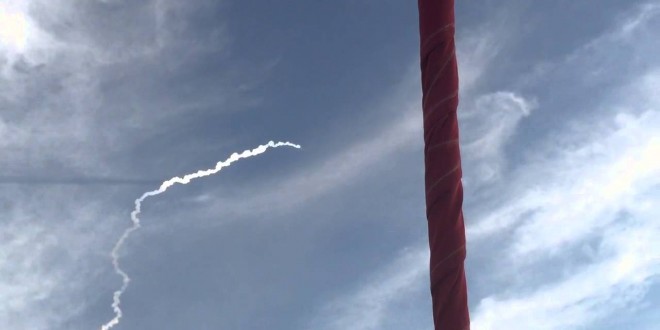Hawaii’s first rocket launch turned into a disaster Tuesday night when the U.S. Air Force’s experimental Super Strypi rocket failed shortly after liftoff.
“The ORS-4 mission on an experimental Super Strypi launch vehicle failed in mid-flight shortly after liftoff at 5:45 p.m.,” the Air Force said, in a statement Tuesday night
The 55-foot “Super Strypi” rocket was launched as part of a test flight of a new military lightweight satellite booster. As part of the demonstration, 13 satellites were fastened inside the rocket’s nose cone for the University of Hawaii, NASA, and university and commercial CubeSat developers..
On Tuesday evening, the first moments of the flight appeared to go well, but then the launch ran into trouble.
The Air Force has not released further details on what might have gone wrong.
“Despite what happened today, this is a tremendous success for the University of Hawaii,” UH spokesman Dan Meisenzahl said.
“We had about 150 students work on this program. They built a satellite. It met every milestone. It passed every test and they delivered it on time,” Meisenzahl said.
The Super Strypi test launch was managed by the Air Force. Known as the ORS-4 mission, the launch was part of work aimed at reducing the cost of military space missions, and the military touted the Super Strypi as a quick-reaction booster capable of rapid call-up and activation.
“I know people will think this is a failure, this is not a failure. This is a tremendous step forward. To use an analogy, this would be like going to the World Series but not winning,” said Meisenzahl.
“We’re on the map in the aerospace industry. We have assets in place, we’ve shown that we can deliver,” he said.
According to SpaceFlight Now, the Air Force has spent more than $45 million on development of the Super Strypi and the ORS-4 mission. That figure doesn’t include investments from other mission partners, including institutions that built the satellites that were riding on the launch.
Agencies/Canadajournal

 Canada Journal – News of the World Articles and videos to bring you the biggest Canadian news stories from across the country every day
Canada Journal – News of the World Articles and videos to bring you the biggest Canadian news stories from across the country every day

